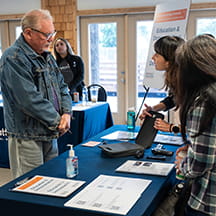As the health care industry evolves, more awareness and discussions are emerging around social drivers of health, which are nonmedical conditions that can directly impact a person’s health, functioning, and quality-of-life outcomes and risks.
Children’s hospitals and pediatric health care providers are uniquely positioned to identify social drivers that exist in the home and community through their personal interactions with children and families. With community stakeholders, children’s hospitals play a key role in addressing social drivers identified at the patient, family, and community levels.
These efforts are part of children’s hospitals’ and health systems’ commitment to provide vital health care to all children and improve children’s health. Early intervention and prevention of chronic health problems can lead to a healthier adult population, stronger workforce, and reduced costs.
Children’s Hospital Association is committed to helping member hospitals and the broader hospital industry understand social drivers of health, how they may be assessed and addressed, and their unique impact on children and their families.
This report provides information from 29 children’s hospitals on how they screen patients and families for social drivers, respond to positive screens, build community partnerships, and improve workflows and referral processes. It also sets forth guiding principles for social driver screenings, including:
- Trust. Building trust between patients, families, and care teams enables insight into a family’s life circumstances and priorities. Educating families about the screening process and asking questions without making assumptions can help build trust over time.
- Guidance from patients and families. Many hospitals seek input from families as they develop, implement, and improve their screening processes. This can lead to a caring and compassionate approach that allows families to respond in a way that is most comfortable for them.
- Cultural competency. It is important to consider how health care providers deliver care to patients with different values, beliefs, and behaviors. Children’s hospitals are successfully tailoring their screening efforts in ways that meet patients’ social, cultural, and linguistic needs.
- Collaboration. Children’s hospitals are partnering with schools, public health, and community-based organizations. It is important to assess the resources available and the capacity of these organizations to receive referrals.
- Start small and grow. Most screening programs start small and expand over time. It takes time to educate and garner support of teams, design workflows, standardize processes, and implement programs systemwide.
- Process improvement. Over time, children’s hospitals are working to improve the quality and efficiency of social driver screenings. This work will continue to evolve as organizations respond to internal learning, evaluation, research, and insights from peers.
- Gain buy-in and identify champions. Buy-in from the right individuals is critical to building and scaling successful social driver screening efforts. This can be done by involving care teams in the design process or acknowledging that different sites of care have different capacities to incorporate screenings into their workflow.
The case examples and questions included in this report can support your organization’s efforts to screen for social drivers of health and ultimately improve the health and health care outcomes for children and families in your community.



